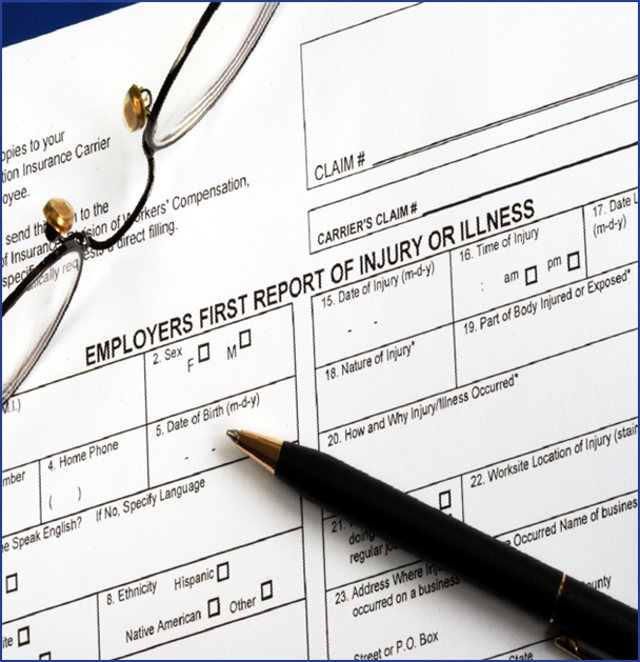Accident Investigation Safety Training Program
7 min readThe goal of this Accident Investigation Safety Training Program is to introduce basic principles and analysis techniques for investigating workplace accidents. The employee will demonstrate knowledge of accident investigation principles and techniques.
The purpose of accident investigations is to prevent future injury (or potential injury) of an employee or property damage. It’s a fact-finding, not fault-finding, process. Removing one or more actions or conditions can prevent most accidents. The process must determine what, when, where, why, and how an incident or accident occurred.
The primary principles of an Accident Investigation Safety Training Program include:
- gather information;
- Search for and establish facts;
- establish essential contributing factors;
- find root cause;
- determine corrective actions; and
- implement corrective actions and follow-up.
Note: Conduct accident investigations separate from legal liability, fraud, or workers’ compensation investigations. The nature of the other investigations can interfere with the main purpose of accident prevention.
Also Read.How to properly investigate accidents in your workplace 10 Critical Steps

Background
The fundamental requirements of an accident prevention program are:
- management support;
- comprehensive recordkeeping;
- analysis of the physical plant, operations, and practices;
- education, training, and discipline to lessen the human factors that may contribute to accidents;
- periodic safety inspections to help detect and correct potential hazards;
- accident reporting and investigation of each accident and incident (near-miss); and
- periodic review of the program to keep it up to date.
The direct cause of an accident usually results from one or more previous unsafe actions or conditions. A good accident investigation program discovers the events leading up to an incident or accident.
Investigations
The person responsible for investigating accidents should create an accident investigation kit. The kit, held until needed, should include (but not be limited to) a camera, a recorder, a notebook, a tape measure, a graph paper sketchpad, and high-visibility tape. An accident investigation form should be developed and used for each investigation.
Also Download: Photo of the day: Incident Investigations
Procedures
The following procedures serve as a guide to conducting a successful accident investigation:

- Secure the area and remove hazards until the investigation can begin. This preserves physical evidence.
- Define the scope of the investigation. Include when the investigation begins and ends.
- If several persons are needed for an investigation, select the investigators. Assign specific tasks to each in writing.
- Make a preliminary briefing to the investigating team. Include the following:
- a description of the accident with damage estimates (which is the principal source of information for analysis);
- a description of normal operating procedures;
- maps or floor plans showing the accident site;
- a list of witnesses; and
- an account of events before the accident.
- Visit the accident site to collect physical evidence, take photos, and prepare sketches. Label everything accurately.
- Interview each victim and witness privately and separately.
- Determine events leading up to the accident. Include the following:
- what was not normal before the accident;
- where did the abnormality occur;
- when was it first noted;
- how did it occur; and
- what are the qualifications of those involved
- Analyze the data collected in step seven. Repeat any steps if necessary.
- Identify the root causes. Include the following:
- why did the accident occur;
- what were the likely sequence of events and probable causes, both direct and indirect; and
- what alternative sequences of events occurred.
- Conduct a post-investigation briefing with management.
- Prepare a summary report. Include recommended actions to prevent a recurrence.
Key Facts
Key facts to look for when conducting an investigation :
- the type of injury incurred;
- the part(s) of the body directly affected by the injury;
- the source of the injury (the object, substance, exposure, or bodily motion that directly produced or inflicted the injury);
- the accident type (the event that directly resulted in the injury);
- the hazardous physical condition or circumstance that allowed the accident to occur;
- the source of the accident (the object, substance, or part of the premises in which the hazardous condition existed);
- the hazardous object (the specific object or activity that was hazardous); and
- the unsafe acts (the violation of an accepted safe procedure that directly resulted in the accident).
Remember to investigate contributing factors and search out the root cause.
Also Read: Conducting an employer investigation
Investigation Techniques
The basic method for investigating occupational accidents1 consists of 10 steps:
- Connect to the accident case. After an accident has occurred, it is essential to check the scene immediately to gather information about what happened. Eyewitnesses should be interviewed, and circumstances can be photographed. All unusual and deviant events and occurrences should be recognized and reported. For example, checking the scene of the accident should include the following points:
- names and locations of the victim(s), eye-witnesses, and other persons working in the area;
- tasks underway and equipment in use at the time of the accident;
- circumstances at the accident scene;
- circumstances of the wider working environment, such as lighting, noise, etc.;
- level of training of the personnel involved; and
- organization of the work and responsibilities of the persons involved.
- Describe the events in chronological order. Outline and separate the events by starting with the accident itself. The investigation should extend backward until the last “normal” working act was performed. It is not enough to describe only the event that led to the accident. It should include:
- the events before the accident occurred;
- the result of those events (injury type and injured body part);
- the type of the accident; and
- the exact cause of the injury.
- Gather information on how the victim was involved with the cause of the injury. Information should include details about:
- the scene and occasion; and
- what the injured individual was doing before the accident occurred.
- Gather information on how the cause of the injury was related to the cause of the accident. The cause of the injury may exist as a part of normal operations but may have resulted due to broken or malfunctioning machines or equipment. It may also have occurred due to equipment wrongly placed in the work area.
- Gather information on factors that contributed to the accident. This information includes:
- events outlined in step two;
- contributing factor(s) that led to the events outlined in step two; and
- recognizing the contributing factors based on a careful inspection of the actual accident scene, instead of guessing from behind an office desk.
- Gather information on why the cause of the injury existed and how it became present at the accident scene. (This is especially important when the accident did not occur at a permanent location.)
- Evaluate ways to prevent similar accidents from happening again.
- Choose the best measure(s) for preventing similar accidents in the future and consider how best to implement these measures. When several optional measures exist, it is essential to consider:
- which is the best and most realistic measure for implementation;
- who is responsible for implementing this measure; and
- what is the schedule for implementing the measure
- Distribute information on the results of the accident investigation at the workplace. It is essential to inform other departments, in addition to those at the scene of the accident, because similar accidents may occur in other locations.
- Follow up to ensure measures are implemented, and evaluate their impact.
Also Read: E-Books: Investigation of Occupational Accidents and Diseases
Investigation Report
No investigation is complete until the report is presented to management. The following can serve as a guide to constructing a report.
- Provide background information. Include the following:
- when and where the accident occurred;
- what was involved; and
- who were the operating personnel and witnesses
- Describe the accident. Include the following:
- the sequence of events;
- the extent of the damage;
- the accident type (fall, caught, struck, etc.); and
- the source of energy or hazardous material.
- Provide an analysis of the accident. Include the following:
- the direct causes (energy sources, hazardous materials, etc.);
- the indirect causes, such as inadequate training, unsafe acts, or hazardous conditions; and
- the underlying causes, such as management policies, personal issues, or environmental factors.
- Offer recommendations to prevent a recurrence. Include the following:
- the direct causes;
- the indirect causes; and
- the basic causes.
A successful accident investigation determines not only what happened, but also when, where, why, and how the accident occurred. Comprehensive documentation and recordkeeping of all incidents and accidents are valuable to the investigation and accident prevention process. The goal of an investigation is to prevent a similar or more disastrous sequence of events from occurring in the future.
Download: Incident Report Form
Review Questions
- An incident is an undesired event that could have resulted in injury to an employee or damage to property.
- a. True.
- b. False.
- What is the principal purpose of an accident investigation?
- a. The purpose is to discover who was at fault.
- b. The purpose is to punish the person who caused it.
- c. The purpose is to prevent a recurrence of the accident.
- The first step in an investigation is to eliminate any hazards and secure the accident area.
- a. True.
- b. False
- A successful investigation determines which items?
- a. A successful investigation determines exactly what happened and when it happened.
- b. A successful investigation determines exactly where, how, and why it happened.
- c. All the above.
Answers
- True.
- c. The purpose is to prevent a recurrence of the accident.
- True.
- c. All the above.
Also, Read:Accident Investigation for Everyone
Please visit our Safety Resources SAFETY BAG to have many Safety Resources




